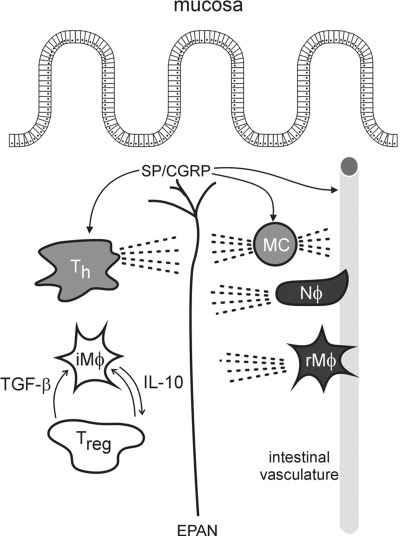Fig. 5.
Illustration of the relationships and interplay between the extrinsic primary afferent neuron (EPAN) innervation of the gut and immune-competent cells and their products. Neuropeptides such as substance P and CGRP are released from primary afferent endings and initiate neurogenic inflammation (arrows indicate some of the peptides' sites of action). Immune-competent cells [e.g., neutrophils (Nϕ) and recruited macrophages (rMϕ)] are recruited to the site of inflammation. Unlike anergic resident immune-competent cells [e.g., intestinal Mϕ and regulatory T cells (Treg)], the recruited cells, together with mast cells (MCs) and T helper cells (Th), secrete inflammatory mediators that act on/regulate receptors (e.g., neurokinin 1), ligand-gated ion channels (e.g., transient receptor potential channel vanilloid 1) and voltage-gated ion channels (which underly changes in neuron excitability and thus sensitization). The dashed lines are intended to indicate release of endogenous substances that can influence vascular permeability and modulate neuron excitability.

